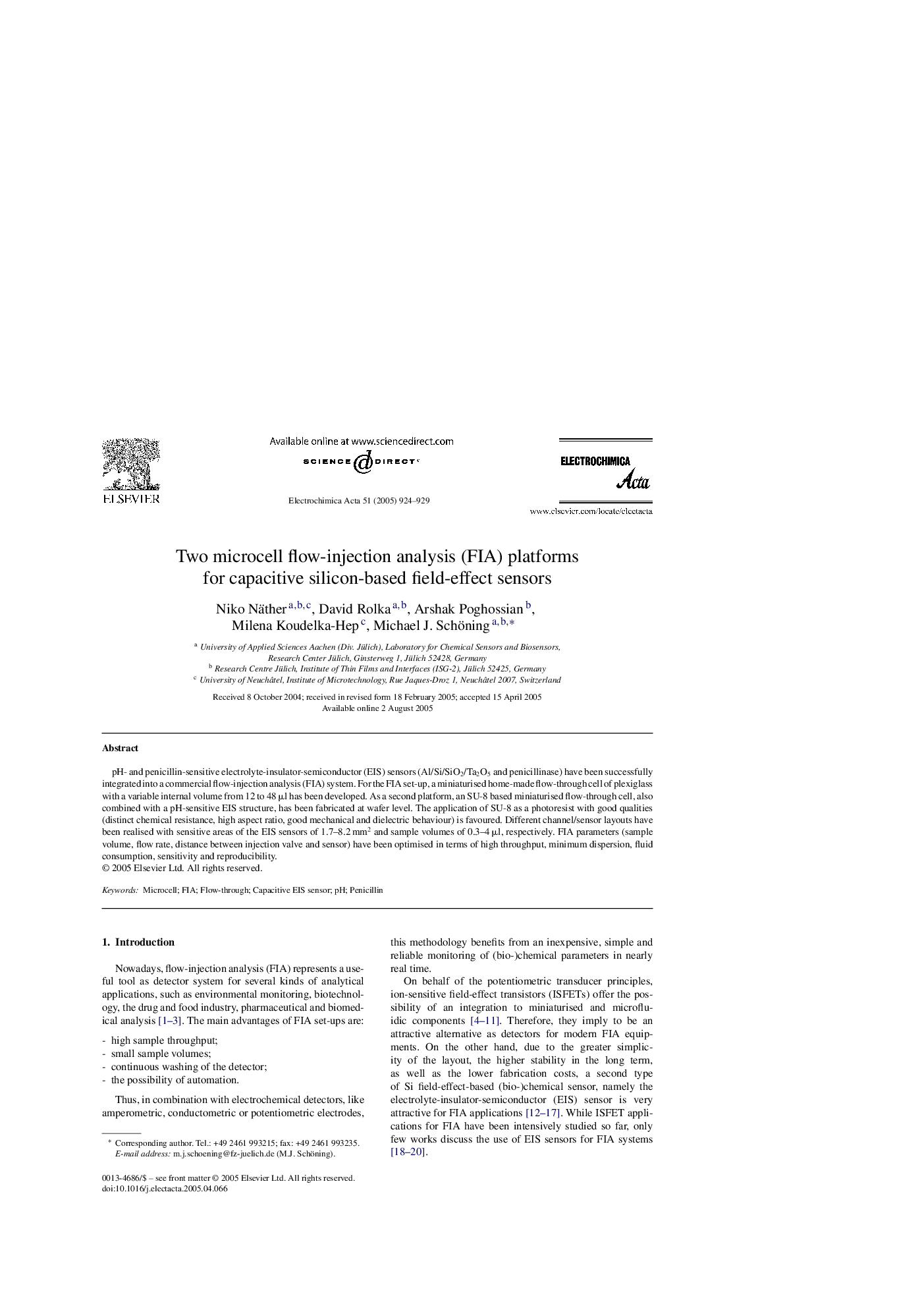| Article ID | Journal | Published Year | Pages | File Type |
|---|---|---|---|---|
| 10269408 | Electrochimica Acta | 2005 | 6 Pages |
Abstract
pH- and penicillin-sensitive electrolyte-insulator-semiconductor (EIS) sensors (Al/Si/SiO2/Ta2O5 and penicillinase) have been successfully integrated into a commercial flow-injection analysis (FIA) system. For the FIA set-up, a miniaturised home-made flow-through cell of plexiglass with a variable internal volume from 12 to 48 μl has been developed. As a second platform, an SU-8 based miniaturised flow-through cell, also combined with a pH-sensitive EIS structure, has been fabricated at wafer level. The application of SU-8 as a photoresist with good qualities (distinct chemical resistance, high aspect ratio, good mechanical and dielectric behaviour) is favoured. Different channel/sensor layouts have been realised with sensitive areas of the EIS sensors of 1.7-8.2 mm2 and sample volumes of 0.3-4 μl, respectively. FIA parameters (sample volume, flow rate, distance between injection valve and sensor) have been optimised in terms of high throughput, minimum dispersion, fluid consumption, sensitivity and reproducibility.
Related Topics
Physical Sciences and Engineering
Chemical Engineering
Chemical Engineering (General)
Authors
Niko Näther, David Rolka, Arshak Poghossian, Milena Koudelka-Hep, Michael J. Schöning,
